The history and work of Trinity House
What did Trinity House ever do for us???
By Mike Deegan, Head of Fleet Operations
In February 2020 I was humbled to be sworn in as one of the Younger Brethren of the Corporation of Trinity House. This is indeed an honour for a mariner or person connected to the maritime world and is granted only after being proposed by members of the Elder Brethren and after that proposal has been considered by the entire Elder Brethren and the Management Board.
The ceremony of being sworn in is a grand affair overseen by the Deputy Master (currently Captain Ian MacNaught, last Master of QE2) and followed by a sumptuous lunch attended by, amongst others, the Trinity House Nether Warden, Rear Admiral David Snelson (who is also a Noble Caledonia Guest Speaker). I was presented with my seal of office and pennant (which I am entitled to fly when I am on board – look out for it next time I am on board with you!)
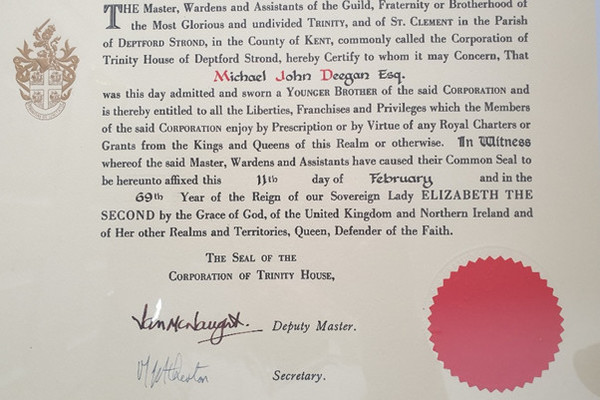
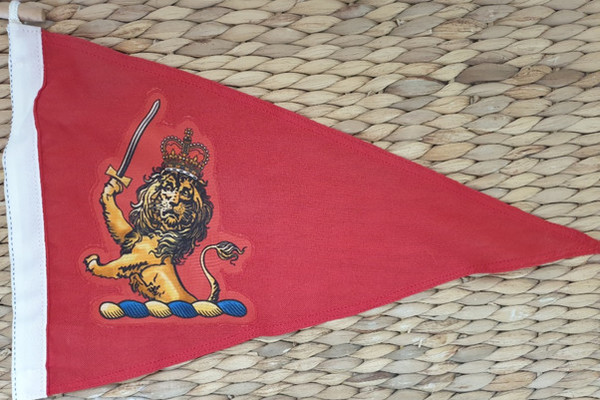
The origins of this very special organisation date back to the 16th century : frustrated by the actions of unregulated pilots on the Thames, a group of mariners petitioned King Henry VIII to licence pilotage on the river. Accordingly in 1514 the King decreed a Royal Charter which set up the Corporation of Trinity House, which was designated as “The Master, Wardens, and Assistants of the Guild, Fraternity, or Brotherhood of the most glorious and undivided Trinity, and of St. Clement in the Parish of Deptford-Strond in the County of Kent." St Clement is the patron saint of mariners. The first Master was Sir Thomas Spert who was the Sailing Master of Henry’s favourite warship the Mary Rose. Queen Elizabeth extended the remit of Trinity House with her “Seamarks Act” of 1555 and in 1594 the remit was extended further to cover all navigational marks in the Kingdom. That remit continues to this day – the responsibility covers the provision of lighthouses, light vessels, buoys and radio / satellite communication systems in England, Wales, the Channel Islands and Gibraltar. Trinity House also provides deep sea pilots for ships trading in Northern Europe. You will be aware that Scotland was not part of the Kingdom in 1594 and so that omission from the Corporation’s responsibilities remains with the General Lighthouse Authority for Scotland and the Isle of Man being the Northern Lighthouse Board or NLB (see my previous article on the mystery of the keepers who disappeared without trace from the Flannan Isles Light in December 1900) – Noble Caledonia has a seat on the NLB’s Scottish Users Consultative Committee and uses the NLB berth at Oban.
Trinity House today is responsible for the operation and maintenance of 65 lighthouses, the last of which (North Foreland in Kent) was automated in 1998 when the final Keepers left. The furthest south is the Europa Point Lighthouse which was built in 1864 on the south-eastern tip of Gibraltar. The estate also includes the Longstone Lighthouse on one of the Outer Farne Islands in the North Sea which is best known for the role the keeper’s daughter, Grace Darling, played in rescuing survivors from the wreck of the SS Forfarshire in 1838. Today you can visit the lighthouse, see Grace’s tiny former bedroom and visit the museum in the structure – Longstone Light is accessible by boat from nearby Bamburgh.
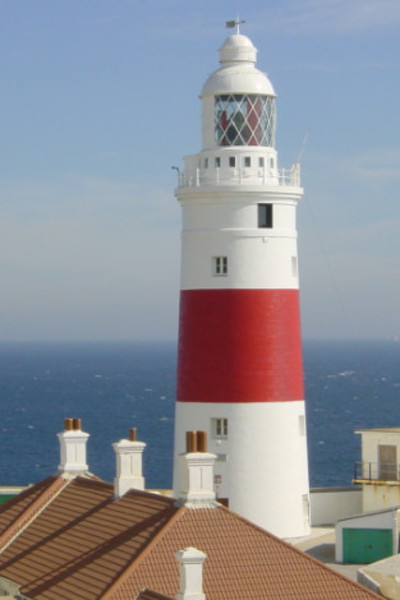
Europa Point Lighthouse, Gibraltar
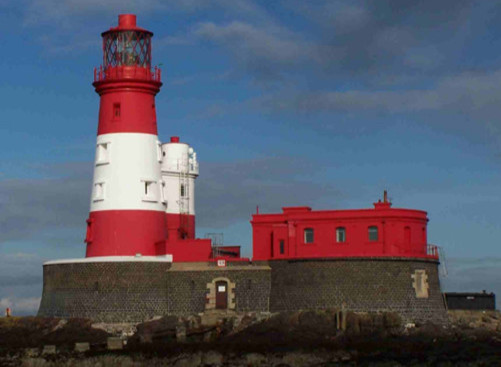
Longstone Lighthouse, Farne Islands
The General Lighthouse Authority arm of Trinity House is funded by “light dues” which are levied on Merchant vessels (including our own) which call at UK ports. Light Dues are based on the Net Registered Tonnage of a vessel (which is, in simple terms, the measure of the cargo capacity of the vessel ie excluding machinery, operational and crew accommodation compartments). These levies are set annually by the Department for Transport. There is something reassuring about sighting a lighthouse or it’s loom at night as a mariner : as a very experienced Master once told me “the GPS tells me where the satellite thinks I am, my dead reckoning tells me where I think I am but a lighthouse tells me where I ACTUALLY am!” Thus even in this digital age, lighthouses and navigational marks generally play a vital role in maritime trade thus global supply lines.
Trinity House in the 21st century also has a charitable arm – it provides managed accommodation for retired seafarers at Walmer in Kent and dispenses funds for the welfare of retired seafarers – for example it recently provided a sizeable grant to the seafarers welfare park in Wallasey on the Wirral to enable that establishment to enhance its facilities and expand.
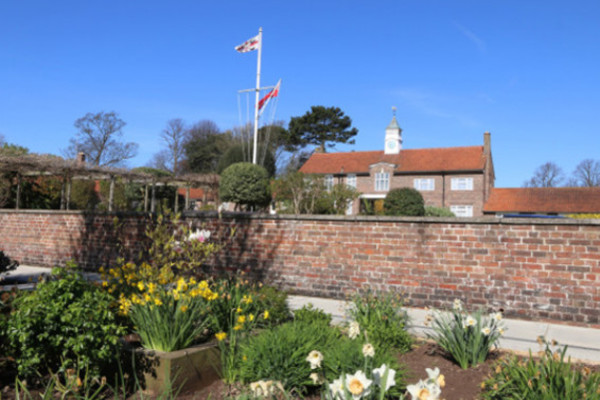
Trinity Homes for retired seafarers, Walmer, Kent
The charitable arm also promotes maritime safety and funds training for Merchant Navy Officer Cadets in both the Navigation and Engineering specialisations – and this is where Noble Caledonia has come in over the past few years. We provide training billets in our ships Hebridean Sky, Island Sky and Serenissima for Officer Cadets undergoing the sea phases of their cadetship. Their training takes the form of a 3 or 4 year period of full-time training different parts of which are either undertaken at a maritime college in the UK to study the theory of their chosen specialisation or at sea where they understudy at different times the Bosun on deck to learn practical elements of seamanship for Deck Cadets, under the Engineer Officers down below for Engineer Cadets and for both specialisations the relevant Officer of the Watch either on the bridge or in the Machinery Control Room to ready them for the day they become fully qualified Officers of the Watch themselves. Over the years we have provided seatime and training to many Trinity House Officer Cadets and the latest two, Drew Greenhalgh and Alice Wells, both Deck Officer Cadets, recently joined Hebridean Sky to commence a period of sea training under the watchful gaze of the Chief Officer. The charitable arm of Trinity House is funded by land ownership mainly in London but also across other areas of the UK.
You may come across Trinity House Officer Cadets if you sail in our expedition cruise vessels – I ensure they not only undertake their planned training and assignments but also engage with guests as this is a vital aspect of work aboard a passenger vessel. As such you may find them assisting with Zodiac operations or hosting your table at lunch. Ask them about their training and other ship types they may have served on prior to embarking in a Noble Caledonia vessel. Their experiences to date or reasons for choosing a career at sea may surprise you. Some have even gone onto secure full-time employment with us when they qualify – they will be the Captains and Chief Engineers of tomorrow or may even be the me (Head of Fleet Operations) of tomorrow – yes, that is right : I started my career as an Officer Cadet.
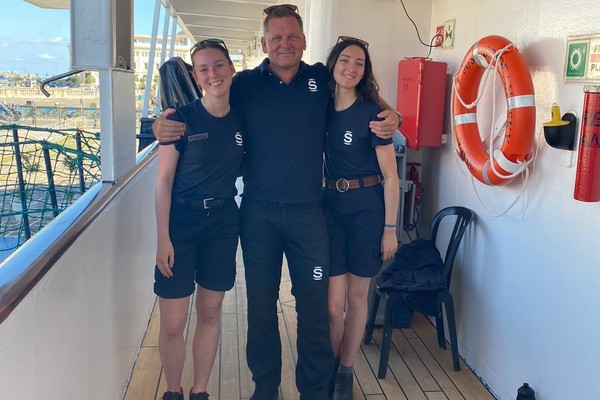
Deck Officer Cadets Alice Wells and Drew Greenhalgh with Hebridean Sky Chief Officer Daniel Sanders
Governance of the Corporation of Trinity House is vested in the Master who devolves day to day management to the Deputy Master. The current Master is the Princess Royal who succeeded her father in the role (still the longest serving Master in the history of the Corporation) in 2011. However previous Masters have included such notables as Samuel Pepys, William Pitt the Younger and the Duke of Wellington. The Master is supported by the Court of 31 Elder Brethren and they in turn are supported by 300 Younger Brethren (from whom the Elder Brethren are appointed) who are appointed from senior maritime professionals who act as advisors and perform other duties.
The Head Office of Trinity House is situated close to Tower Hill in London. The building was designed by renowned architect Samuel Wyatt (1737 – 1807) and completed in 1796. It has a suite of five State Rooms which have views across the Thames, the Tower of London and Trinity Square. There are two operational yards, one at Harwich and one at Swansea from where the Corporation’s fleet of three Buoy Tenders operate to service the navigational marks Trinity House is responsible for.
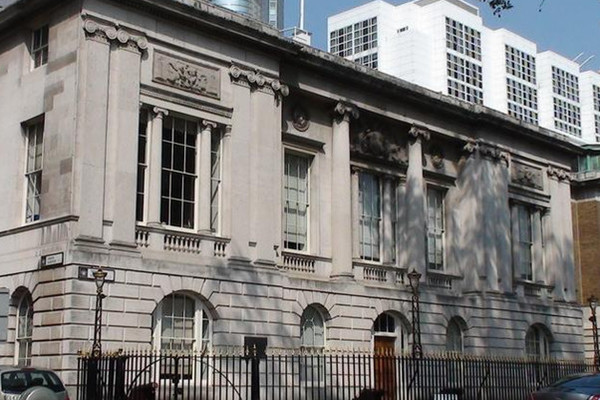
Trinity House, London
So in answer to the question “What did Trinity House ever do for us?” – it provides safety at sea, safety of navigation around these shores, keeps the maritime trades routes open, funds training of Merchant Navy Officer Cadets and provides welfare for retired seafarers – all of this it does 24 hours a day, 365 days a year and it has done so continually since 1514. We should be very proud of this very special organisation which sits at the very heart of our maritime nation and I am very proud to be a small part of the Corporation of Trinity House.





